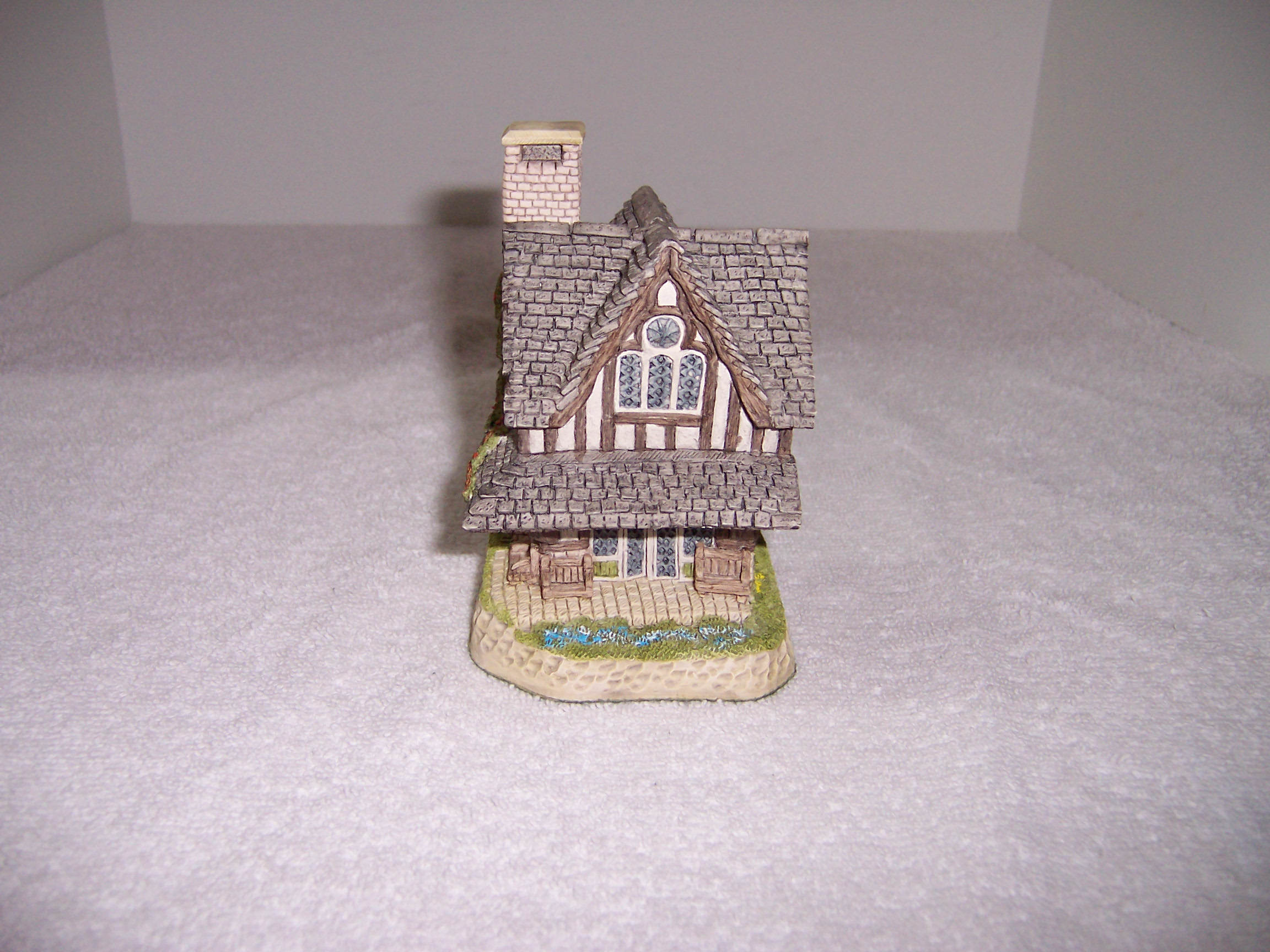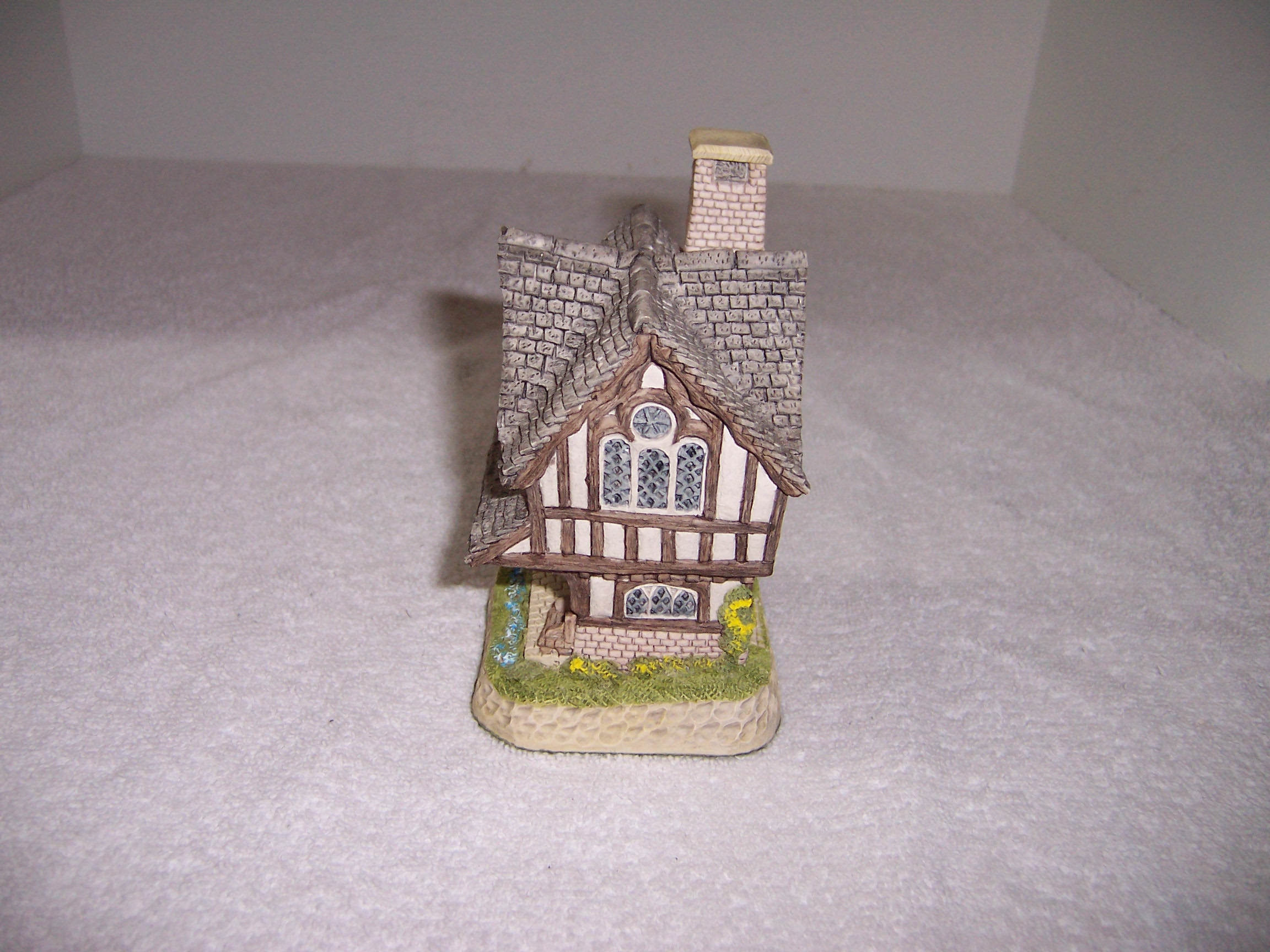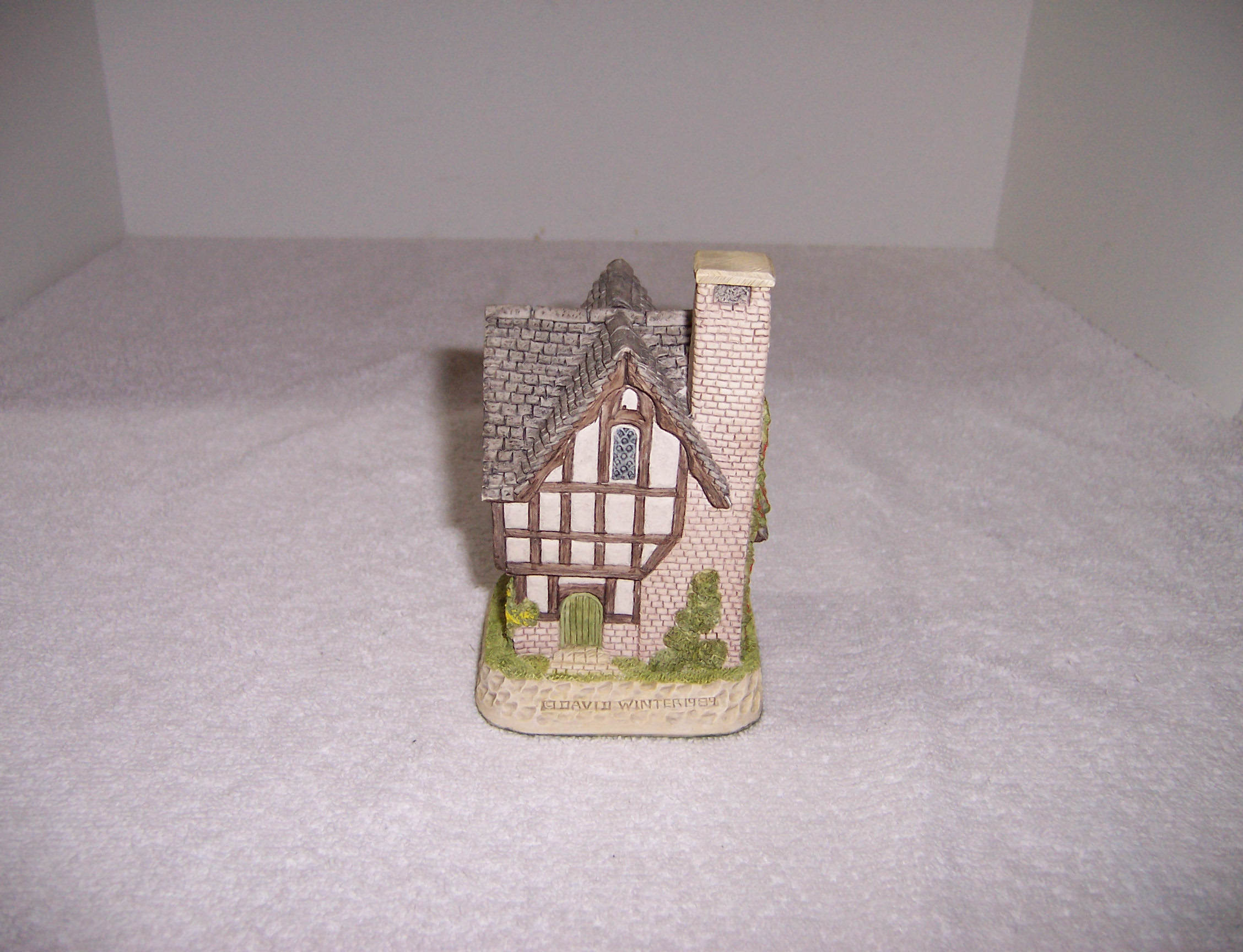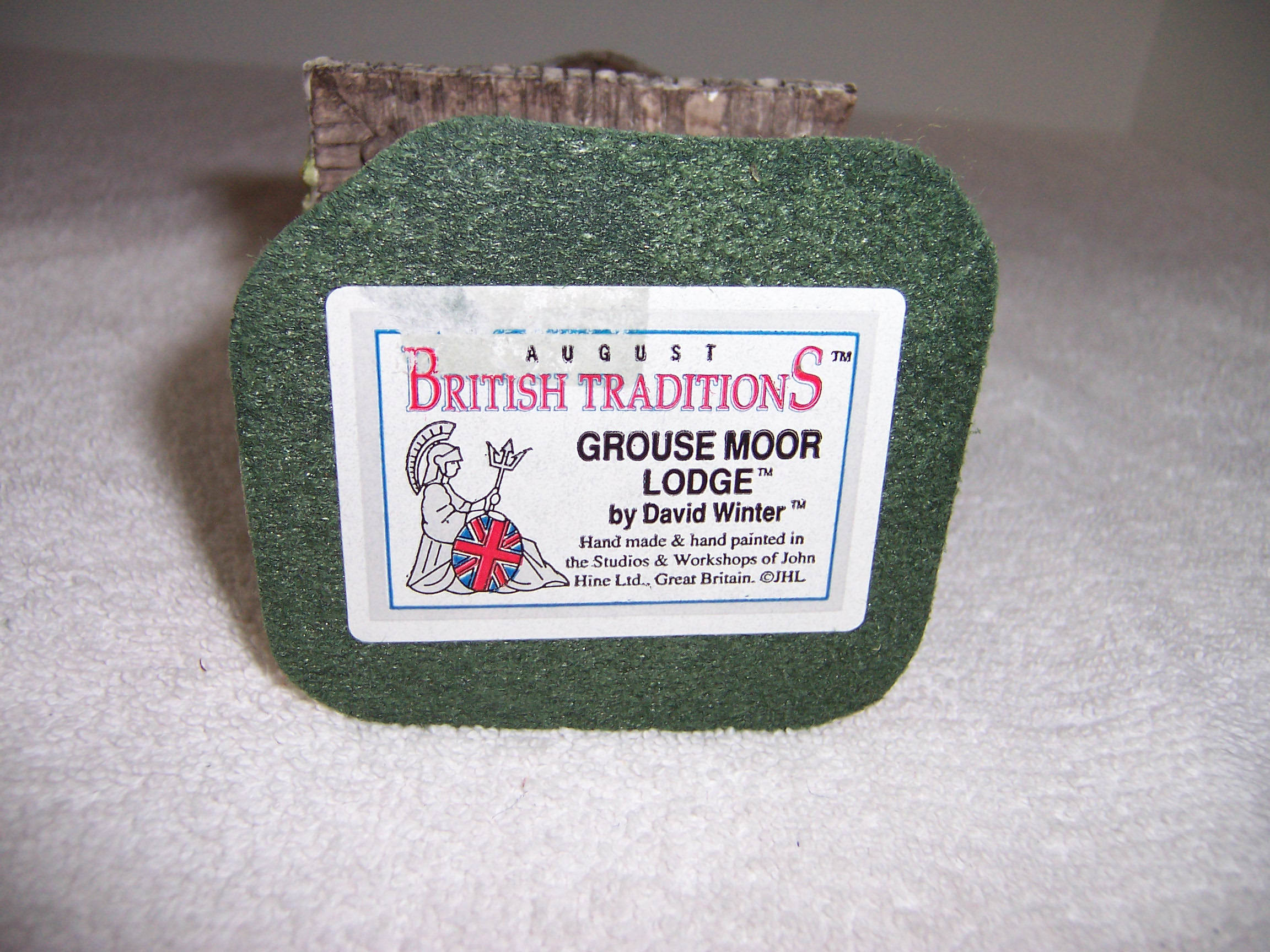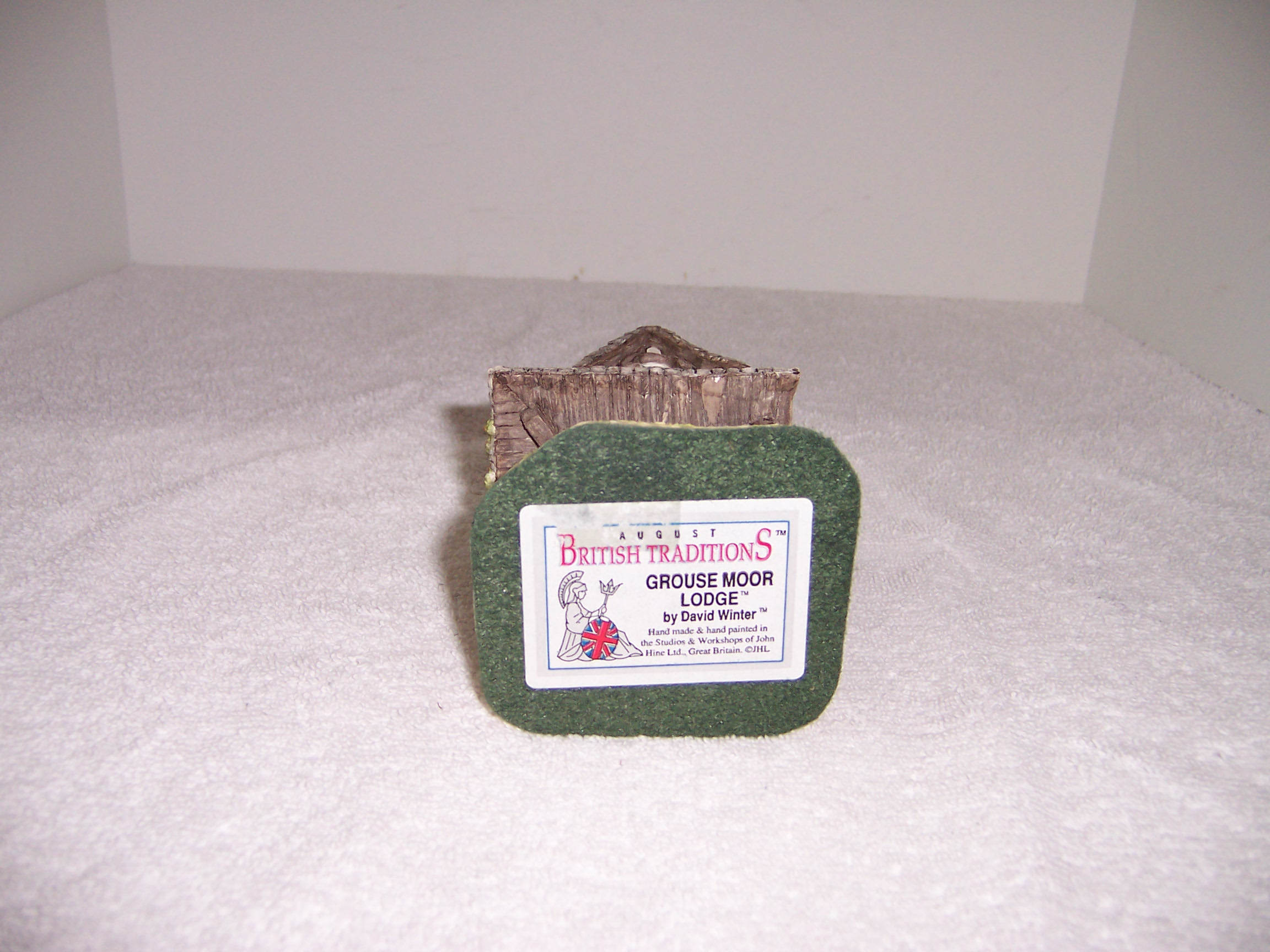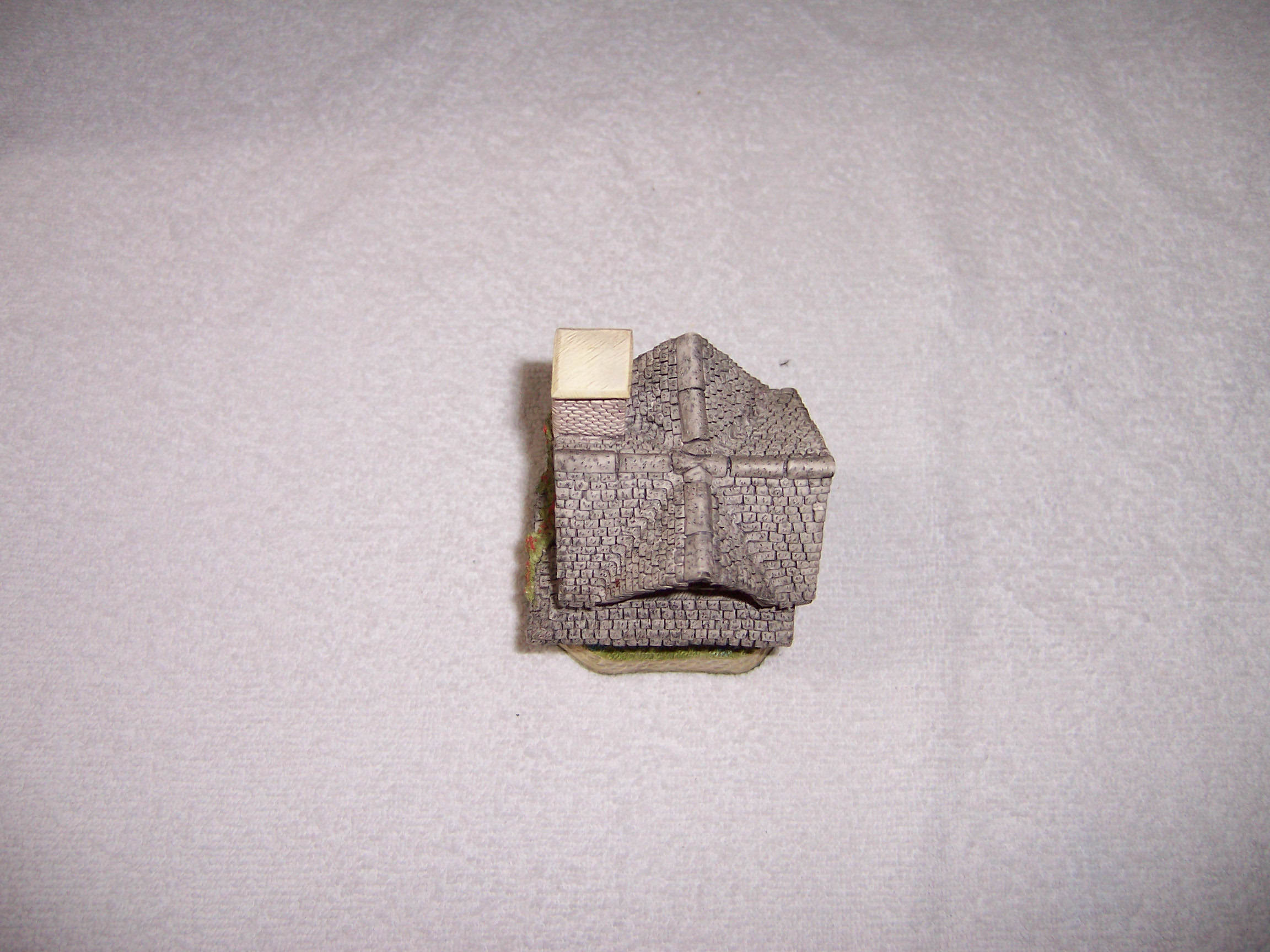Description
Grouse Moor Lodge August 1989 by David Winter British Traditions in good condition. It measures 5″ high x 3.25″ x 2 7/8.
David Winter History
Introduction
David Winter Cottages are highly detailed miniature houses and other buildings, styled after traditional British village life. They are individually designed by talented sculptor David Winter, who began creating the collection in the late 1970s through his collaboration with John Hine.
History
David Frederick Spencer Winter was born on December 18, 1958 in the town of Catterick, Yorkshire. He was the youngest of 3 children born to Freddie Winter, a Colonel in the British army and Faith Winter, FRBS (Fellow of the Royal Society of British Sculptors). Catterick is home to the largest British army garrison and more military personnel than civilians. As an army child, David moved around a lot in his early childhood years, including Kent, Hampshire and even a spell in Singapore. Returning to the UK for his teenage years, he finished his schooling in the county of Surrey.
It was at age 20, while helping in his mother’s studio, that David was introduced to John Hine. John had commissioned Faith to produce some heraldic plaques and David had been the one to complete this project. It wasn’t until John approved of the plaques that David was introduced as their creator, however!
ODonovans Castle 1982 by David Winter
Although the heraldic plaques did not prove to be as popular as John hoped, he was impressed by David’s skills and attention to detail. They continued to collaborate on several other ideas without success until John suggested cottages. The idea followed a conversation John had with a store owner in London, who showed him a popular Denby butter dish in the shape of a cottage. David went on to produce his first cottage in 1979, The Mill House, with many more to follow. The contrasting characters of David and John, the quiet unassuming artist and the charismatic marketer, complemented each other perfectly.
John and David began producing the cottages in the coal shed at the back of David’s parents’ home. They offered them for sale through select stores in Great Britain and they were received with instant acceptance. Initially, all cottages were painted by Audrey White in her home. Audrey was first introduced to John and David horatio-pernicketys-amoruswhen she responded to an ad John had posted in the local newspaper, the Surrey Advertiser, looking for someone to paint the heraldic plaques. She had prior experience in painting miniatures and quickly demonstrated her skills. As the business expanded a network of home painters was created to keep up with demand and the coal shed was no longer sufficient for the thriving company.
In 1981 the business moved to the town of Aldershot, Surrey, before moving to larger premises again the following year, in Bordon, Hampshire. A further move followed within the town of Bordon in 1985 and, in 1986, Eggars Hill Barn, in Aldershot, was renovated and converted to bring together the creative staff who had been working in different locations. Production remained in Bordon. Eggars Hill Barn would later house a museum and visitor center for collectors.
Not only did the company grow in size in the early 1980s, but it also matured in many other respects. Early experiences taught David and his fellow craftsmen what worked and what to avoid. Experimentation enabled greater complexity and intricacy. More staff with dedicated roles meant improved quality controls and better consistency of final products. These improvements were reflected in increasing levels of demand, both in Great Britain and in newer markets, particularly the US. Collector demand frequently outstripped expectations and ability to supply sufficient quantities.
The Collectors Guild was created in 1986, providing the most enthusiastic of collectors a means to acquire exclusive guild pieces and be guaranteed the opportunity to acquire pieces through a one-per-member redemption certificate program.
The continued growth in demand through the late 1980s led to the opening of several more production workshops in Southampton, Newcastle-upon-Tyne and Wrexham. In 1991, David purchased a vacation home in Ireland, Newtown Millhouse, which he had renovated. Upon completion, he began to sculpt from this home almost exclusively.
Unfortunately, the good times didn’t last. Demand peaked and began to decline in the early 1990s. In 1993 production was consolidated into the Wrexham facility and in December of that year John Hine Ltd was acquired by Media Arts Group Inc. (MAGI). A further slump in sales and the number of retail channels stocking the product ultimately led to MAGI placing the John Hine Ltd business into receivership in late 1996. Amid disagreements about the causes of the failure, David and John parted ways after 17 years of partnership and friendship. David retained the rights to the products and set up his own studio.
In February 1997, Enesco acquired the production and distribution rights for David Winter Cottages, with production starting later that year. Having plenty of experience in the collectibles market and an extensive organization, Enesco pumped up the marketing and created some renewed interest in the David Winter line, with a combination of old and new sculptures. However, there were still issues with the number of stockists and the level of interest never looked like reaching previous highs. The arrangement lasted for almost 5 years before coming to an end in December 2002.
From 2003 to 2009, David Winter cottages were distributed through The Friends of David Winter collectors club in the US. This organization comprised 3 key individuals; David Winter, Martin Perry of Harmony Kingdom and Kevin Pearson of British Collectibles/Kevin Francis Face Pots.
David officially retired in January 2010.

